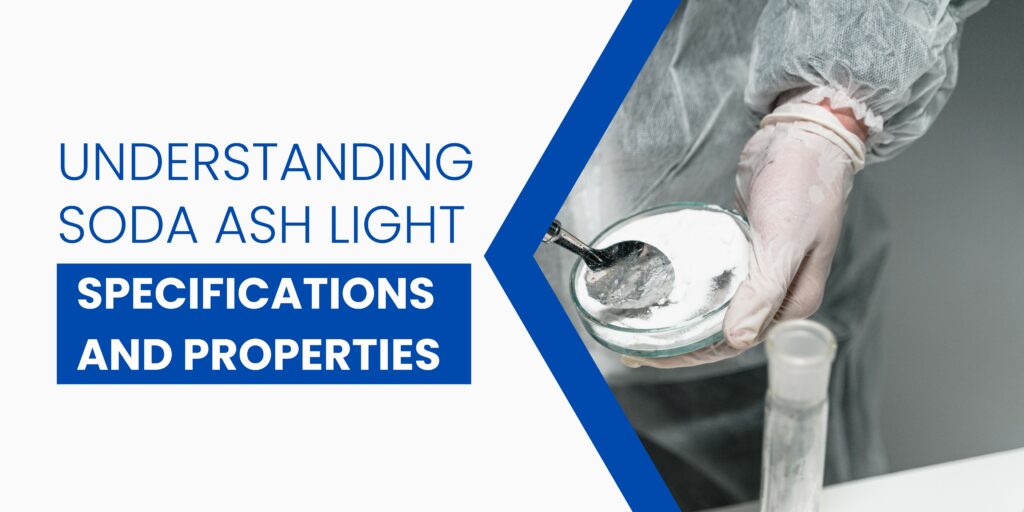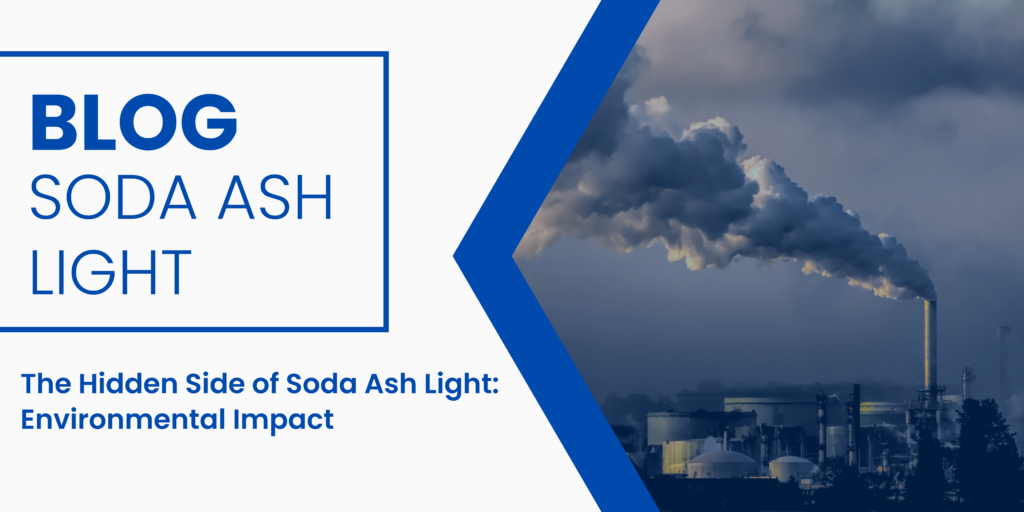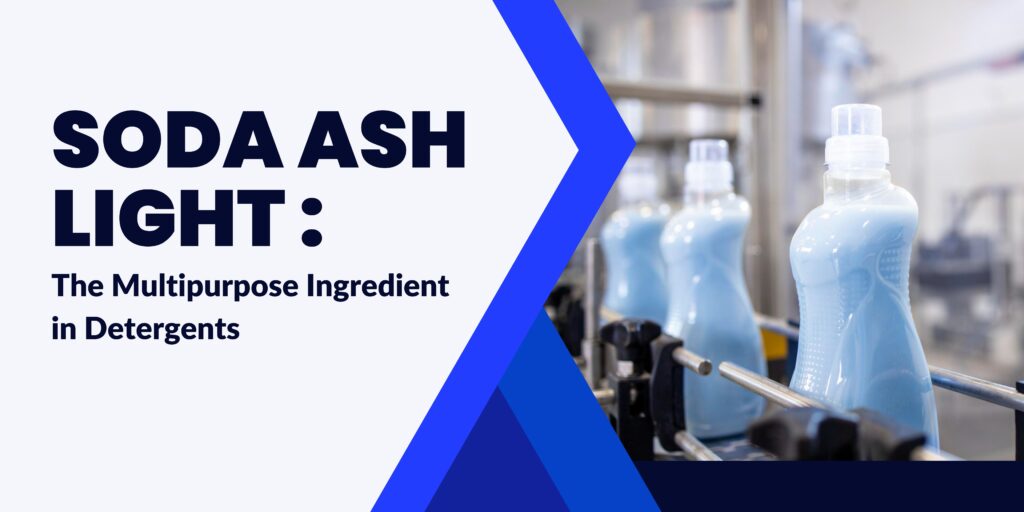
Soda ash light, also known as sodium carbonate, is a versatile chemical compound with a wide range of industrial applications. Its significance extends across industries such as glass manufacturing, detergents, chemicals, textiles, and water treatment. In this detailed exploration, we will delve into the specifications of soda ash light, understanding its chemical composition, physical properties, manufacturing processes, regulatory compliance, shelf life, and diverse applications in various sectors.
Introduction to Soda Ash Light
Chemical Composition
Soda ash light is chemically represented as Na2CO3, indicating its composition of two sodium (Na) atoms, one carbon (C) atom, and three oxygen (O) atoms. It is a white, odorless powder that dissolves readily in water, forming a basic solution.
Physical Properties
- Appearance: Soda ash light is commonly found in the form of a white, fine powder with a crystalline structure.
- Solubility: It exhibits high solubility in water, resulting in a strongly alkaline solution.
- Density: The density of soda ash light is typically around 1.2 g/cm³.
- Melting Point: The compound has a relatively high melting point, around 851 degrees Celsius (1564 degrees Fahrenheit).
- pH Level: In solution, soda ash light imparts a high pH, making it alkaline.
Manufacturing Process
The production of soda ash light involves several key steps, primarily the Solvay process. This method has been widely adopted for its efficiency and environmental considerations.
Solvay Process
- Ammonia Recovery Tower: The process begins with the reaction between sodium chloride (NaCl), limestone (CaCO3), and ammonia (NH3) in an ammonia recovery tower. This forms ammonium bicarbonate.
- Precipitation of Sodium Bicarbonate: The ammonium bicarbonate is then reacted with carbon dioxide (CO2), resulting in the precipitation of sodium bicarbonate (NaHCO3).
- Conversion to Soda Ash: Sodium bicarbonate is further processed to produce soda ash by heating it, releasing carbon dioxide and water. The end product is sodium carbonate or soda ash.
- Soda Ash Light Formation: The soda ash obtained can be classified into two main types: soda ash dense and soda ash light. The latter is produced by introducing specific conditions during the manufacturing process, resulting in a lighter and more porous form of soda ash.
Purity and Quality Control
Purity is a critical aspect of soda ash light. Impurities can affect its performance in various applications. Quality control measures are implemented throughout the production process to ensure that the final product meets industry standards. Analytical techniques, including spectroscopy and chromatography, are employed to assess the purity of soda ash light.
Specifications of Soda Ash Light
Understanding the specifications of soda ash light is essential for its successful application in diverse industries. Here, we will break down the key specifications that define its quality and suitability for different purposes.
Chemical Specifications
- Sodium Carbonate Content: The primary specification is the sodium carbonate content, typically expressed as a percentage. High purity soda ash light often contains 99% or more sodium carbonate.
- Sodium Bicarbonate Content: Trace amounts of sodium bicarbonate may be present, and the specification ensures that it is within acceptable limits.
- Water Insolubles: This parameter measures the presence of impurities that do not dissolve in water. Low levels of water insolubles are indicative of high-quality soda ash light.
- Iron Content: Iron can be an impurity that affects the color and clarity of certain products. Strict limits are set for iron content to maintain the desired product characteristics.
Physical Specifications
- Particle Size Distribution: Soda ash light is commonly available in various particle sizes, ranging from fine powders to granules. The choice of particle size depends on the intended application.
- Bulk Density: Bulk density is a measure of the mass of soda ash light per unit volume. It influences factors such as packaging, transportation, and storage.
- Porosity: Soda ash light is known for its porous structure, which can affect its reactivity and dissolution characteristics. Porosity is often controlled to optimize performance in specific applications.
Download our TDS to find out the Soda Ash Light specifications of various grades and origins.
Regulatory Compliance
Soda ash light is subject to various regulatory standards to ensure its safe production, handling, and use. Compliance with regulations such as REACH (Registration, Evaluation, Authorization, and Restriction of Chemicals) in the European Union and others is crucial for manufacturers and end-users alike.
Shelf Life
Soda ash light, when stored under appropriate conditions, exhibits a long shelf life. The shelf life is influenced by factors such as moisture, temperature, and exposure to contaminants. Manufacturers typically provide guidelines on storage conditions and shelf life to ensure the product’s quality over time. It is important for end-users to adhere to these guidelines to maximize the effectiveness of soda ash light in their applications.
Applications of Soda Ash Light
The versatility of soda ash light is evident in its widespread applications across different industries. Let’s explore how its specifications contribute to its effectiveness in various sectors.
Glass Manufacturing
- Glass Composition: Soda ash light is a key component in the manufacture of glass. It reacts with silica to lower the melting point of the raw materials and facilitate the formation of glass at lower temperatures.
- Clarity and Color: The specifications of soda ash light, particularly low iron content, contribute to the clarity and colorlessness of glass products.
Detergent Production
- pH Adjustment: Soda ash light is used to adjust the pH of detergents, enhancing their effectiveness in cleaning applications.
- Water Softening: Its ability to react with hardness ions in water makes soda ash light a common ingredient in water softening agents.
Chemical Industry
- pH Regulation: In various chemical processes, soda ash light serves as a pH regulator, maintaining optimal conditions for reactions.
Precursor in - Chemical Synthesis: It is utilized as a precursor in the synthesis of various chemicals, contributing to the production of compounds with diverse applications.
Textile Industry
- Dye Fixation: Soda ash light is employed in the textile industry to fix dyes to fabrics, enhancing color fastness.
- pH Control in Printing: In textile printing processes, soda ash light helps control the pH of printing pastes, ensuring the stability of dyes.
Water Treatment
- pH Adjustment in Water Treatment: Soda ash light is used in water treatment to adjust the pH of water, making it suitable for various industrial processes and potable water supply.
- Removal of Heavy Metals: Its alkalinity facilitates the precipitation and removal of heavy metals from water, contributing to environmental remediation.
Challenges and Future Developments
While soda ash light continues to be a crucial industrial chemical, certain challenges and opportunities for improvement exist.
Environmental Impact
- Energy Consumption: The Solvay process, while efficient, requires significant energy input. Ongoing efforts are directed toward developing more energy-efficient production methods.
- Waste Generation: The production process generates by-products, and sustainable disposal or reuse strategies are being explored to minimize environmental impact.
Innovations and Research
- Alternative Production Methods: Research is ongoing to explore alternative methods for soda ash production that are more environmentally friendly and economically viable.
- Nanotechnology Applications: Nanotechnology offers new possibilities for enhancing the properties and applications of soda ash light, such as improved reactivity and controlled release of the compound.
Conclusion
In conclusion, soda ash light is a versatile compound with specifications carefully tailored to meet the demands of diverse industries. Its applications in glass manufacturing, detergents, chemicals, textiles, and water treatment underscore its importance in our daily lives. Understanding the specifications of soda ash light is crucial for manufacturers, ensuring they produce a product that meets industry standards, and for end-users, guaranteeing its effective use in various applications. As we navigate environmental challenges and seek sustainable solutions, ongoing research and innovations in soda ash light technology will likely shape its future applications and production methods.




